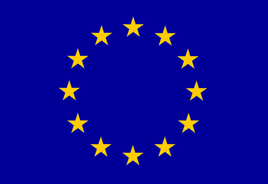We've updated publication list on our website, and reached a milestone! Feel curious to dive into more than 50 publications investigating Gallium Nitride power devices!
Modeling the Non-Equilibrium Process of the Chemical Adsorption of Ammonia on GaN(0001) Reconstructed Surfaces Based on Steepest-Entropy-Ascent Quantum Thermodynamics
| Title | Modeling the Non-Equilibrium Process of the Chemical Adsorption of Ammonia on GaN(0001) Reconstructed Surfaces Based on Steepest-Entropy-Ascent Quantum Thermodynamics |
| Publication Type | Journal Article |
| Year of Publication | 2017 |
| Authors | Kusaba A, Li G, von Spakovsky MR, Kangawa Y, Kakimoto K |
| Journal | Materials |
| Volume | 10 |
| Issue | 8 |
| Date Published | 8/2017 |
| Type of Article | Journal Article |
| ISSN | 1996-1944 |
| Abstract | Clearly understanding elementary growth processes that depend on surface reconstruction is essential to controlling vapor-phase epitaxy more precisely. In this study, ammonia chemical adsorption on GaN(0001) reconstructed surfaces under metalorganic vapor phase epitaxy (MOVPE) conditions (3Ga-H and Nad-H + Ga-H on a 2 × 2 unit cell) is investigated using steepest-entropy-ascent quantum thermodynamics (SEAQT). SEAQT is a thermodynamic-ensemble based, first-principles framework that can predict the behavior of non-equilibrium processes, even those far from equilibrium where the state evolution is a combination of reversible and irreversible dynamics. SEAQT is an ideal choice to handle this problem on a first-principles basis since the chemical adsorption process starts from a highly non-equilibrium state. A result of the analysis shows that the probability of adsorption on 3Ga-H is significantly higher than that on Nad-H + Ga-H. Additionally, the growth temperature dependence of these adsorption probabilities and the temperature increase due to the heat of reaction is determined. The non-equilibrium thermodynamic modeling applied can lead to better control of the MOVPE process through the selection of preferable reconstructed surfaces. The modeling also demonstrates the efficacy of DFT-SEAQT coupling for determining detailed non-equilibrium process characteristics with a much smaller computational burden than would be entailed with mechanics-based, microscopic-mesoscopic approaches. |
| URL | http://www.mdpi.com/1996-1944/10/8/948 |
| DOI | 10.3390/ma10080948 |


